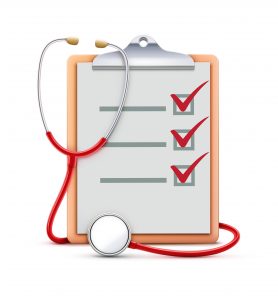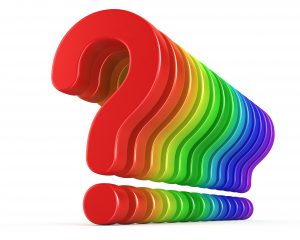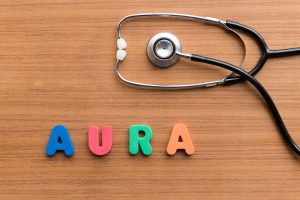There are a number of different types of seizures, including the  following:
following:
Partial Seizure (also called focal seizure) is a seizure which affects initially only one localised area of the brain and has a clinical pattern influenced by that location, for example:
- Seizures of motor cortex present with unilateral motor features (jerking or twitching movements occurring on one side of the body) but no other features.
- Temporal lobe seizures may present with complex sensory or emotional presentations such as fearfulness, deja-vu experience, abnormal taste or smell sensation or with stereotypical patterns such as staring, lip smacking, repeated chewing or episodic confusion.
- Frontal lobe seizures typically present overnight or in mornings, with a variety of patterns, some influenced by proximity to motor cortex, or behavioural patterns (e.g. motor agitation or automatisms, strong emotional sensations; which may be accompanied by vocalisations or laughter/crying, features that may be misinterpreted as being psychogenic.
Simple Seizure: a seizure without loss of consciousness.
Complex Seizure: a seizure with loss of consciousness.
- These terms may be combined e.g. a complex partial seizure is a partial seizure that includes loss of consciousness.
Generalised Seizure (also referred to as Diffuse or Tonic-Clonic seizures): a seizure that affects both sides of the brain and has a clinical pattern that involves all limbs.
- Partial seizures are said to become secondarily generalised if they initially present with a focal seizure pattern, but evolve during the course of a seizure into a generalised pattern
- Patterns of generalised seizures may include:
- Tonic seizures: predominant motor pattern is one of limb stiffness or rigidity
- Atonic seizures: predominant motor pattern is one of loss of muscle tone, resulting in a pattern described as “drop attacks”.
- Clonic and/or myoclonic seizures: present with rapidly alternating contraction and relaxation or “jerking”of a muscle
- Myoclonic seizures often only last for a fraction of a second and you might have a single jerk or clusters of several jerks.
- Absence seizures typically present as brief loss of consciousness which may appear to be daydreaming or ‘switching off’ possibly with blinking or slight jerking of body or limbs.
- Prodrome (aura, the phase before a seizure): the person may experience a sense of déjà vu, altered sensory perceptions or abdominal rising sensation.
- Epileptic attack: tonic phase and/or rhythmic jerking or complex movements may occur during the seizure. The person may also be incontinent.
- Post-ictal (phase after seizure): The person may experience confusion, fear, exhaustion, self-injury and transient neurological deficits.
Status Epilepticus: a seizure lasting greater than 30 minutes. It is a medical emergency with risks of arrhythmia, reduced cerebral oxygenation, cerebral oedema or muscle damage leading to renal failure
Triggers for Seizures include:
- Missed anticonvulsant medication.
- Alcohol excess/withdrawal.
- Cocaine, ecstasy or other substance abuse/withdrawal.
- Interacting medications (antidepressants, antipsychotics
 and oral antispasticity medications are the most commonly prescribed medications in TBI patients, but you should consult British National Formulary for complete list.
and oral antispasticity medications are the most commonly prescribed medications in TBI patients, but you should consult British National Formulary for complete list. - Lack of sleep.
- Illness (febrile or afebrile).
- Menstrual cycle.
- Flickering lights.
For further information consult:
Epilepsy Scotland www.epilepsyscotland.org.uk
National Society for Epilepsy www.epilepsysociety.org.uk
